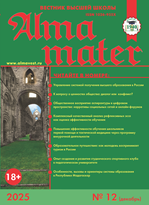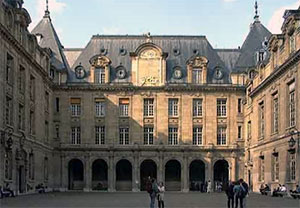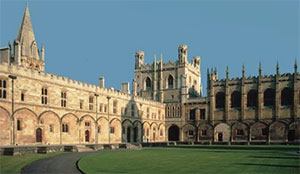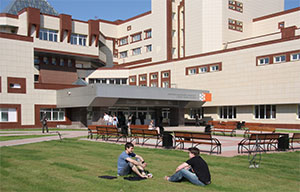Svyatoslav B. Gulyaev, Cand. Sc. (Sociology), Leading Research Fellow, Deputy Director for Research, Institute for Demographic Research, Branch of the Federal Center of Theoretical and Applied Sociology of the Russian Academy of Sciences, https://orcid.org/0000-0001-9022-7687, e-mail: sviatoslav2004@mail.ru
The article analyzes the current demographic situation in Russia and projects its improvement taking into account large families.
The novelty of this study, its analysis, conclusions and research are related to the focus on the practice of advanced, modern and successful in terms of fertility and economy countries such as the USA.
For the first time at the modern level considered the scheme “Garden Cities”, proposed back in the 19th century, but has become relevant in the 21st.
The article contains four parts. The logic of the presentation is as follows. First, the demographic development and demographic policy of Russia are analyzed. Then the author's proposal on the state regulation of housing construction for large families in the form of “Agro-town” is considered. The article is written on the basis of federal laws and other normative legal acts, analysis of official statistics on demography.
Many people are interested in when the demographic revival will occur; they are concerned about the problems associated with the birth rate, the reasons why it fluctuates, and the prospects for population reproduction. Modern society is in the era of universal demographic transformation, when, due to the explosive growth, the humanity inhabiting the planet radically changes the principle of its development and reverses, limiting its reproductive resources. This important event in the history of the planet manifests itself primarily in the dynamic change of the institution of the family and affects many aspects of family life in Russia. The main thing in this is that with the appearance of tools of labor man could find food and build dwellings faster and, therefore, settled and multiplied faster. This statement exposes the problematics of this topic and reveals the analysis of the article.
The study provides a comparative analysis of the current production indicators of construction in Russia. The study analyzes the federal budget expenditures on the state program for the development of housing for large families in the country.
The conclusion gives a forecast for the possible development of housing for large families in the “Agro-towns” of the new generation on the analogy of the “Garden Cities” of the 19th century.
Keywords: Many children, “Garden city”, agro-town, marriage, age group, urban population, demographic situation, demographic development, fertility, woman, natural population decline, divorce, rural population, demographic policy
References
1. Marx, K. Abstract of Lewis G. Morgan’s book “Ancient Society”. In: Marx, K., Engels, F. Works. 2nd ed. Vol. 45. P. 227–372.
2. Lenin, V.I. Party Organization and Party Literature. Novaya Zhizn. November 13, 1905. No. 12. In: Works of V.I. Lenin, 5th ed. Vol. 12.
3. Population of the USSR for 70 years / Rybakovsky, L.L., Zayonchkovskaya, J.A., Vishnevsky, A.G., etc.; Edited by L.L. Rybakovsky; USSR Academy of Sciences, Institute of Sociology. Moscow: Nauka, 1988. 212 p.; Materials on Statistics of Petrograd and Petrograd Province. Vol. 5. P. 26.
4. Gulyaev, S.B. Transformation of the institution of the Russian family and evaluation of the effectiveness of family policy social environment and social policy: new approaches and innovative technologies: proceedings of the International Scientific and Practical Conference “Dynamics of the social environment as a factor in the development of the need for new professionals in the field of social work and organization of work with youth”, Nizhny Novgorod, March 28–29, 2019. Ser. Demography. Sociology. Economics. Vol. 5. No. 5 / edited by Ryazantsev, S.V., Rostovskaya, T.K., Saralieva, Z.H., 2019. Moscow: Econ-Inform, 2019. URL: https://www.elibrary.ru/item.asp?id=39158592 (accessed on: 05.03.2024); Kapitsa, S.P. Sketch of the theory of humanity’s growth: Demographic revolution and information society. 2nd ed. Moscow: LENAND, 2014.
5. Shevyakov A.Yu. Socio-economic aspects of solving demographic problems in the system of strategic development of Russia. Moscow: Institute of Social and Economic Problems of Population of the Russian Academy of Sciences, 2007. URL: https://cyberleninka.ru/article/n/chelovecheskiy-kapital-i-biosotsialnye... (accessed on: 05.03.2024).
6. Makarenko, A.S. The Book for Parents. St. Petersburg: Lan, 2013. 99 p.
7. Trofimova, I.N. Social policy in the regions of the Russian Federation in the context of inter-sector interaction. POLITEKS. 2009. Vol. 5. No. 1. URL: https://cyberleninka.ru/article/n/sotsialnaya-politika-v-regionah-rossiy... (accessed on: 05.03.2024).
8. Mendeleev, D.I. Toward the Knowledge of Russia. Moscow: Iris-press, 2002. 559 p.
9. Ilf, I., Petrov, E. One-Story America. Moscow: Goslitizdat, 1937. Удалить контейнер
10. Averin, A.N. State regulation of demographic and migration processes in the Russian Federation: textbook. Moscow: Prospect, 2017. 125 p.
11. Howard, Ebenezer. To-morrow: A Peaceful Path to Real Reform, 1989 (original title). Online publication: Cambridge University Press, 2012. https://doi.org/10.1017/CBO9780511706257 (accessed on: 05.03.2024).
12. Vishnevsky, A.G. Demographic history and demographic theory: a course of lectures. Moscow: Publ. House of Higher School of Economics, 2019. 368 p.
13. Yusupov, A.N., Likhachev, E.N. Architectural composition and methods of its construction: textbook. Almaty: Evero, 2017. 116 p. URL: http://e-lib.dulaty.kz/lib/document/TARGU/CA112B17-ADF0-4D18-94D6-A472FF... (accessed on: 05.03.2024).












.png)






